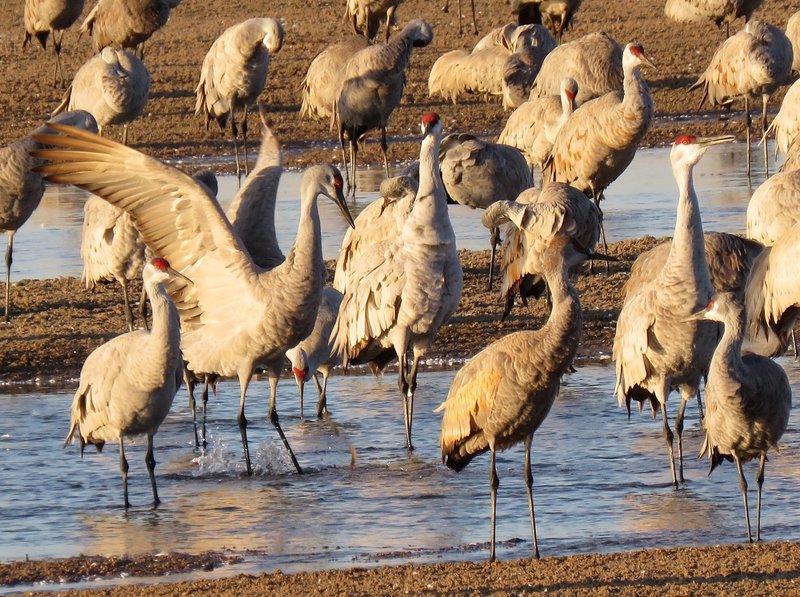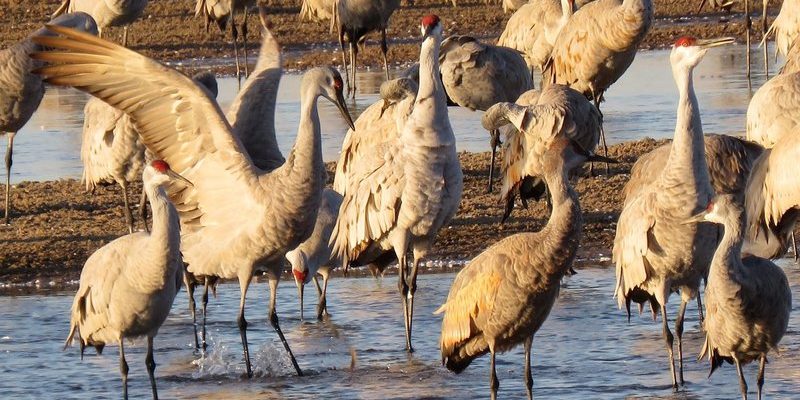
Imagine a world where these beautiful birds can soar freely without the shadows of extinction looming over them. Just like a delicate piece of art, cranes need a protective environment to thrive. Conservation efforts act like a protective frame, ensuring these birds have the support they need to flourish in nature. Here’s a closer look at what’s being done—and why it’s so important.
The Importance of Cranes in Ecosystems
Cranes play a vital role in their ecosystems. They are not just pretty faces; these birds help maintain the health of wetlands and grasslands. By foraging for food, they aerate the soil and promote the growth of various plant species. Think of them as nature’s gardeners.
Without cranes, ecosystems could become imbalanced. Their feeding habits control insect populations and contribute to seed dispersal, which is essential for plant reproduction. So, when we talk about conservation efforts, we’re not only saving a species but also preserving the intricate web of life they are part of.
For instance, the whooping crane, which is one of the most endangered crane species, has been subject to numerous conservation initiatives. The recovery of this bird is not just a success story; it’s also a reflection of the health of North American wetland habitats.
Current Threats to Crane Populations
Understanding what threatens cranes can help us see why conservation efforts are so crucial. Urbanization is one of the biggest culprits. As cities expand, cranes lose their natural habitats. Wetlands are drained for development, and agricultural activities often encroach on their feeding and nesting grounds.
Additionally, climate change poses significant risks. Rising temperatures and changing precipitation patterns can alter the landscapes where cranes thrive. Extreme weather events, such as floods or droughts, can decimate their breeding sites. You might imagine a crane standing in a drying pond, scratching its head in confusion. This is not just a poetic image; it’s a reality many cranes face today.
Hunting and poaching also threaten certain crane species. Sadly, some cultures prize crane feathers, leading to illegal captures. This human-driven pressure on their populations underscores the need for effective conservation measures.
Key Conservation Initiatives for Cranes
Various organizations and governments are stepping up to protect crane populations. One notable example is the International Crane Foundation (ICF), which works globally to conserve all 15 species of cranes. They focus on habitat preservation, community engagement, and research.
Another effort involves creating protected areas where cranes can nest and raise their young without disturbance. In places like the U.S., Great Plains grasslands have been designated as wildlife refuges, allowing cranes to flourish in safer environments.
Community engagement is also crucial. Local populations are educated about cranes, helping them understand the birds’ ecological importance. When communities become involved in conservation efforts, they often take pride in protecting these animals, creating a win-win situation.
Restoration of Habitat
Restoring crane habitats is another essential part of conservation. This can involve rewetting drained wetlands or planting native vegetation that cranes rely on for food and nesting.
For instance, in areas where agricultural runoff has degraded wetlands, restoration projects work to cleanse and reintegrate these lands into the ecosystem. It’s like giving a tired garden a much-needed makeover, allowing it to bloom again.
Moreover, partnerships between governmental bodies and environmental organizations are pivotal in these restoration efforts. By pooling resources and expertise, they can make larger impacts than if they worked in isolation.
Community Involvement and Education
Getting the local community involved in crane conservation creates a sense of ownership and responsibility. Organizations often host events that educate the public about cranes and their habitats. This can include workshops, birdwatching days, or school programs.
When communities understand the importance of cranes, they are more likely to protect their habitats. Imagine a group of children gathering for a day of learning about cranes. They might paint pictures, learn to identify different species, or even participate in habitat restoration. These experiences can foster a lifelong passion for conservation.
Additionally, creating citizen science programs allows individuals to contribute to crane research. For example, birdwatchers can track crane migrations and report sightings, providing valuable data to researchers. It’s an empowering way to connect people with nature while helping protect this magnificent species.
Success Stories in Crane Conservation
There are numerous success stories in crane conservation, which serve as beacons of hope. The whooping crane is a prime example. Once on the brink of extinction with fewer than 20 individuals in the wild, concerted conservation efforts have helped boost their numbers to over 800. It’s an inspiring comeback—like a superhero story in the animal kingdom!
Another success story involves the Siberian crane, which has seen improved populations due to habitat protection in their breeding grounds. International collaboration among countries has been vital, emphasizing that conservation knows no borders.
Also, local initiatives, such as the reintroduction programs for the California condor, indirectly benefit crane conservation by promoting similar strategies for other endangered species. It’s all part of a larger picture where conservation efforts can have ripple effects beyond a single species.
The Future of Crane Conservation
The future of crane conservation hinges on continued commitment and innovation. New technologies, such as satellite tracking, are being employed to monitor crane movements and habitats more effectively. These tools can provide insights that help shape future conservation strategies.
Additionally, climate change adaptation will be crucial. Conservationists are increasingly focused on creating resilient habitats that can withstand environmental shifts. It’s about being proactive instead of reactive, ensuring these beautiful birds have a fighting chance in an uncertain world.
Moreover, raising awareness on a global scale can help mobilize support for cranes. Social media campaigns, documentaries, and photography can highlight the plight of cranes, inspiring people to get involved.
In closing, protecting cranes is not just about saving a bird; it’s about preserving a vital part of our natural world. Through habitat restoration, community engagement, and continued collaboration, the chances of these magnificent creatures continue to improve. With each conservation effort, we’re not just securing the future of cranes but also honoring the beauty and complexity of our ecosystems. Let’s keep working together to ensure that the cranes can dance across our landscapes for generations to come.

